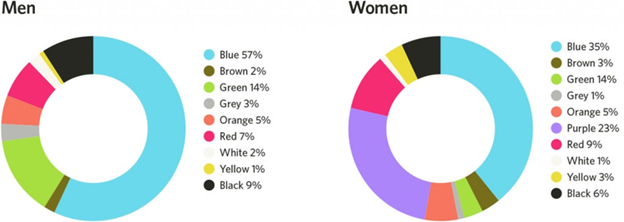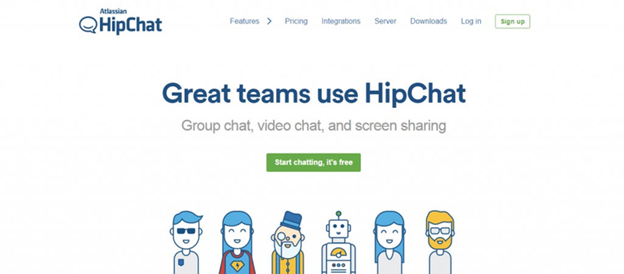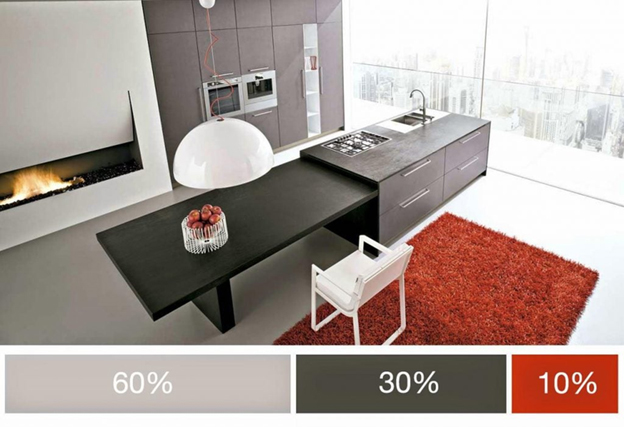Color's Effect on Conversion Rates
One of the most effective tools in a designer's toolbox is color. It has the power to grab attention, create an atmosphere, and affect a user's feelings, perceptions, and behavior.
Color does not give design a pleasant quality; rather, it strengthens it.
Jacques Bonnard
Did you know that 90% of the reasons you choose a particular product were influenced by color? Or that magazine advertising in full color are noticed 26% more often than those in black and white?
It looks really straightforward: use the appropriate colors, and you succeed. But how do you choose the "correct" hue is the main query that arises. We must examine conventional color associations, how men and women see different color schemes, and accessibility issues in order to respond to this topic.
Psychology of Color
Color has a profound psychological impact on the human brain in addition to providing us with objective information about a product. Depending on where in the globe your design will be seen, specific colors might evoke various emotions. Here are some emotions that certain hues might evoke in the west:
Red
Risk, significance, and passion
Red is the hue of blood and fire. One of the most potent hues, it is associated with both love and war (the proverb "to see red" emphasizes the hue's association with rage).
Red is a hue with a strong emotional impact. It may truly affect a person physically by increasing their heart rate and respiratory rate.
Red is also well recognized for attracting the eye. Red may be a potent accent color in design. Red is a terrific highlight color for the most significant individual pieces on your website, just like red carpets at award ceremonies and celebrity events.
Orange
Assurance, vigor, and optimism
Orange has a lot of vibrancy. It has some of red's stimulating qualities, but to a lower extent: it may convey a playful mood and has an energizing aura without red's anger.
Orange may be used to draw attention to crucial aspects like call-to-action buttons and emphasize them since, like red, it has great visibility. Despite some evidence suggesting otherwise, numerous applications and websites make appropriate use of the word "cheap."
Yellow
Sunshine, joy, and focus
Interestingly, yellow may signify both joy and fear. Yellow is a color that is frequently used for warning signs since it is excellent at drawing attention in design (it can be associated with danger, though not as strongly as red).
It may draw a lot of attention when paired with black. A New York taxi cab might serve as a nice illustration outside of digital design.
Green
Success, Growth, and Nature
Nature is the clear connection between green and nature. Green is also related to growth and health since most plants are green.
Green may have a balanced and harmonizing influence on a design. The harmony of green is conducive to calls to action, but as a designer, you should be aware of color saturation. Green hues with high saturation are eye-catching and energetic, drawing a lot of attention. They are effective as call to action buttons because of this.
Blue
Trust, relaxation, and comfort
The sky and the ocean are both blue. It is both one of the most significant and commonly used colors in UI design. The precise shade of blue you choose will significantly affect how people will react to your creations in the field of design:
Light blue may be calming, liberating, and rejuvenating. This laid-back friendliness also translates into innate trust, which is why banks frequently deploy it.
Dark blues are fantastic for projects where sturdiness and dependability matter.
Purple
Opulence, Spirituality, and Imagination
Purple has a unique position in design due to its scarcity in nature and the high cost of producing the hue. Purple has a long history of being associated with royalty and still exudes a sense of richness. Purple gives the impression that something is high-end even when it isn't.
It's noteworthy to note that about 75% of kids prefer purple to every other hue.
Black
Strength, Grace, and Sophistication
Since black is the most powerful hue and captures attention the fastest, it is frequently used for text and accents.
Black has its own emotional ties when it serves as the primary color in a color scheme, such as a backdrop. It may be simpler to portray a design's elegance and mystique in this way.
White
Wellness, cleanliness, and virtue
White is frequently linked to virtues like cleanliness, purity, and goodness. White may be used to convey safety when promoting medical or high-tech items since it is frequently associated with health services and innovation.
White is a common option for a secondary color in design since it highlights the colors surrounding it. An effective design element is the effective use of white space. Think of the Google search homepage, for instance. It is obvious that white allows other colors to speak louder in a design:
Grey
Professionalism, Neutrality, and Formality
Grey is the color of neutrality. It's a hue that goes well with others. Gray appears professional when used as a primary hue, but that isn't always a negative thing. A gray backdrop can be used, like a white one, to highlight other colors.
Most Popular Colors

Colors I Hate the Least

- Men and women alike prefer the hue blue more than any other. Variations of blue are far more frequently preferred by men than by women.
- Brown, orange, and yellow are the least liked hues by both men and women. Purple is one of the least popular colors for men, whereas grey is one of the least popular colors for women.
- Men typically choose strong colors while women favor gentler colors when it comes to shades, tints, and hues.
- The majority of people mistakenly believe that pink is the hue that all women like. Pink is a hue that only a tiny portion of women chose as their favorite. Consequently, even while pink may be associated with femininity in terms of color psychology, this does not imply that all or even most women find it attractive.
Business and Color
Colors' significance in branding
In the design philosophies of many businesses, color takes center stage. Every color we see has an implication, whether overt or covert, that influences how we perceive certain companies. Some colors, like blue for travel, green for health, and red for fast food, define whole sectors independent of their brands.
There isn't a set formula for choosing a color palette for your company, though. While some businesses opt to adopt the standard colors used in their sector, others have discovered that defying convention may be a highly powerful approach to make an impact. For instance, Virgin America made the decision to build their website and app in a way that was contrary to the norm. Although it may not be what visitors would anticipate from an airline website, it sticks out.
So using unusual colors might be a good strategy to get people to remember your business.
Optimization of color and conversion rates
How may color psychology and theory be used to entice people to click a button? One of the oldest arguments around conversion and optimization is the color of the call to action button. For every expert who asserts that the ideal color for a button is the attention-grabbing red, there are two more who assert that the best color is green since it is secure and denotes "go."
A test conducted by HubSpot demonstrated how a CTA button's color has a significant influence on signups.

The red button received 21% more clicks despite their initial expectation that the green button would perform better. In addition, HubSpot cautioned readers that test findings are arbitrary (their audience likely prefered the red button because it was the only color that stands-out on the page).
The button's color alone has very little to no impact. What operates on one website might not operate on another. There is no one optimal hue, therefore claiming that one converts better than another is simply false. There are, however, certain generalizations that might assist you in making the most of color. The "isolation effect," a psychological theory, is one of them. It holds that something that "sticks out like a sore thumb" is more likely to be recalled.
No matter how well red buttons worked in another company's A/B test, people may not immediately notice a green button if your website or app is predominantly green.

For a call to action to stand out, it is crucial to alter the visual hierarchy of the entire page. Contrast between colors is crucial since you won't make a sale or gain a sign-up if the button's color doesn't catch the customer's eye.

Utility and color
Design is about more than simply aesthetics; it's also about usability and usefulness, which are likely the two elements that matter most to any UX designer. A good user interface employs color to focus the user's attention as well as their interactions with the whole experience. Color is a tool that may aid with eye navigation.
Specify fewer colors.
Balance is important when applying color to a design, and the more colors you use, the harder it is to establish balance. A typical design error is using too many colors. Doing so might be confusing to the person seeing your design since it can seem like you're attempting to transmit a million different emotions and messages at once.
The straightforward interior design guideline 60-30-10 is effective for many different designs. It's a time-tested decorating method that may make creating a color palette simple. Your primary color is 60%, your secondary color is 30%, and your accent color is 10%. This formula is effective because it promotes equilibrium and makes it easy for the eye to travel from one focal point to another.

Making things accessible
Everybody has a unique color perception. There are 0.5% of women and 8% of males that suffer from some sort of color blindness. The hues that are most impacted by color-vision deficiencies are red and green. You shouldn't rely solely on these color combinations to distinguish between two states or values.

Let's look at an example: Have you ever encountered an error notice that reads, "The fields indicated in red are necessary" when you are filling out a form? Even while it might not seem like a huge deal, persons with color-vision deficiencies may find this error notice and the form in the example below to be a very irritating experience.

According to W3C recommendations, color shouldn't be the only visual tool used to communicate information, denote an action, elicit a response, or identify a visual element. The above-mentioned form's designer could at the very least provide a symbol next to the field that needs user attention, or at the very least provide more detailed error messages such, "The email address that you entered is not valid."

In general, the following tools are excellent for assisting you in testing the accessibility of your UI:
- You may verify your color combinations with the WebAIM Color Contrast Checker.
- To make sure that graphical information is effectively communicated to persons with different forms of color vision impairment, including people who are color blind, designers can use Adobe Photoshop to verify graphics with Color Universal Design.
Conclusion
We've spoken about a number of aspects of color that might impact how users interact with your website or app, but we still don't have a solution to the issue of how to choose the "correct" color. The answer, as you probably already know, is that there is no "ideal color" for conversions. The true significance of color in design is not found in individual hues but rather in the palette you choose and the combinations you make. The Material Design quotation expresses this concept succinctly:
“There are no inappropriate hues. How you utilize them is most important.”
Conversion study is necessary if you want to significantly increase your conversion rates. Analyzing what your consumers actually need, the language that appeals to them, and how they desire to purchase the product will result in significant increases in conversions. The design choice that your users believe is best is the one that should be made.
 English
English
 Español
Español
 Français
Français
